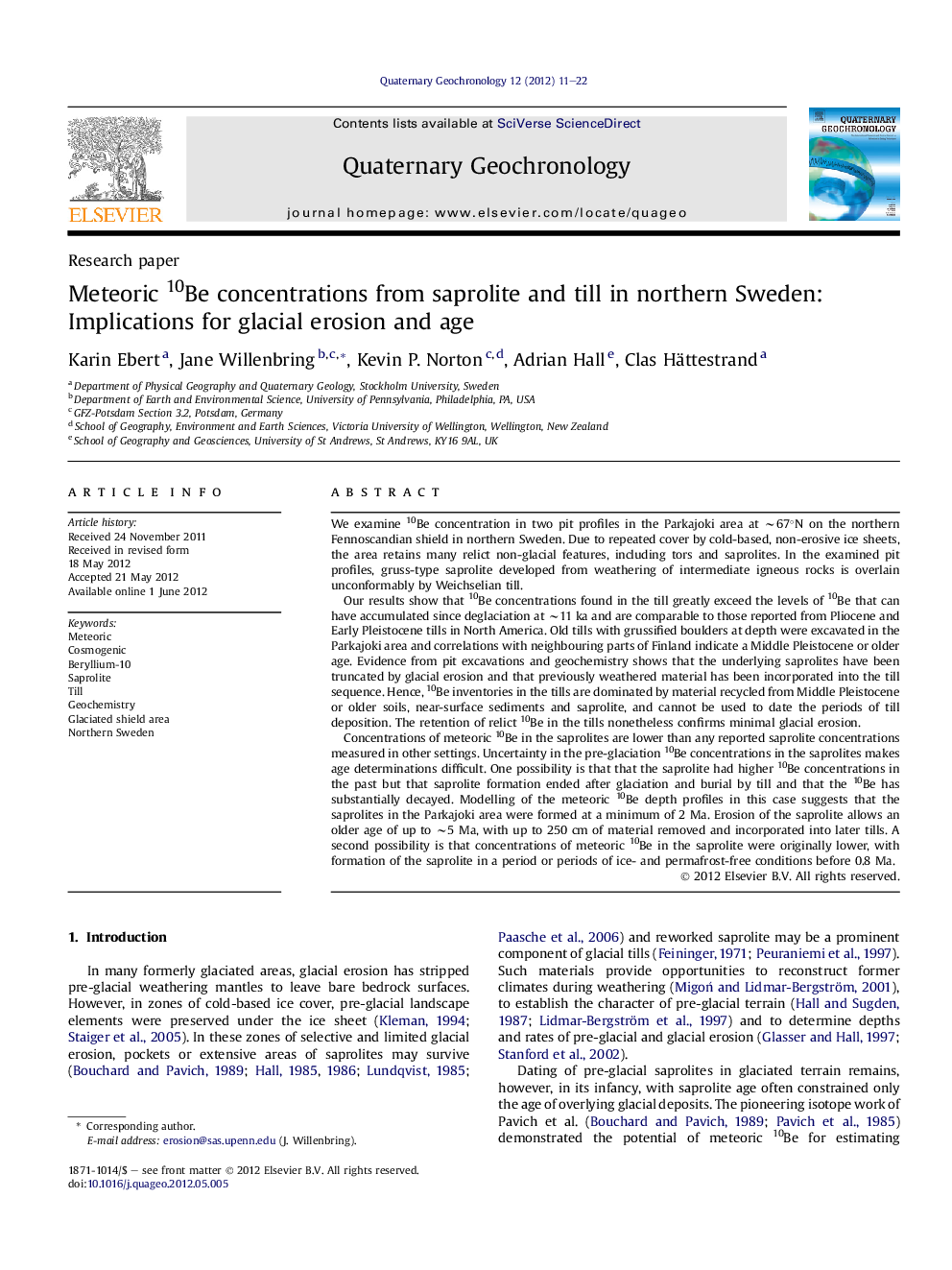| کد مقاله | کد نشریه | سال انتشار | مقاله انگلیسی | نسخه تمام متن |
|---|---|---|---|---|
| 4725031 | 1639864 | 2012 | 12 صفحه PDF | دانلود رایگان |

We examine 10Be concentration in two pit profiles in the Parkajoki area at ∼67°N on the northern Fennoscandian shield in northern Sweden. Due to repeated cover by cold-based, non-erosive ice sheets, the area retains many relict non-glacial features, including tors and saprolites. In the examined pit profiles, gruss-type saprolite developed from weathering of intermediate igneous rocks is overlain unconformably by Weichselian till.Our results show that 10Be concentrations found in the till greatly exceed the levels of 10Be that can have accumulated since deglaciation at ∼11 ka and are comparable to those reported from Pliocene and Early Pleistocene tills in North America. Old tills with grussified boulders at depth were excavated in the Parkajoki area and correlations with neighbouring parts of Finland indicate a Middle Pleistocene or older age. Evidence from pit excavations and geochemistry shows that the underlying saprolites have been truncated by glacial erosion and that previously weathered material has been incorporated into the till sequence. Hence, 10Be inventories in the tills are dominated by material recycled from Middle Pleistocene or older soils, near-surface sediments and saprolite, and cannot be used to date the periods of till deposition. The retention of relict 10Be in the tills nonetheless confirms minimal glacial erosion.Concentrations of meteoric 10Be in the saprolites are lower than any reported saprolite concentrations measured in other settings. Uncertainty in the pre-glaciation 10Be concentrations in the saprolites makes age determinations difficult. One possibility is that that the saprolite had higher 10Be concentrations in the past but that saprolite formation ended after glaciation and burial by till and that the 10Be has substantially decayed. Modelling of the meteoric 10Be depth profiles in this case suggests that the saprolites in the Parkajoki area were formed at a minimum of 2 Ma. Erosion of the saprolite allows an older age of up to ∼5 Ma, with up to 250 cm of material removed and incorporated into later tills. A second possibility is that concentrations of meteoric 10Be in the saprolite were originally lower, with formation of the saprolite in a period or periods of ice- and permafrost-free conditions before 0.8 Ma.
► Age and genesis of saprolite and till examined in a glaciated shield area.
► Meteoric 10Be and geochemistry analysed.
► Till contains high 10Be concentrations matched only by Pliocene and Early Pleistocene tills in N America.
► Saprolites have low 10Be concentrations due to truncation and were formed prior to 1 Ma and after 5 Ma.
Journal: Quaternary Geochronology - Volume 12, October 2012, Pages 11–22